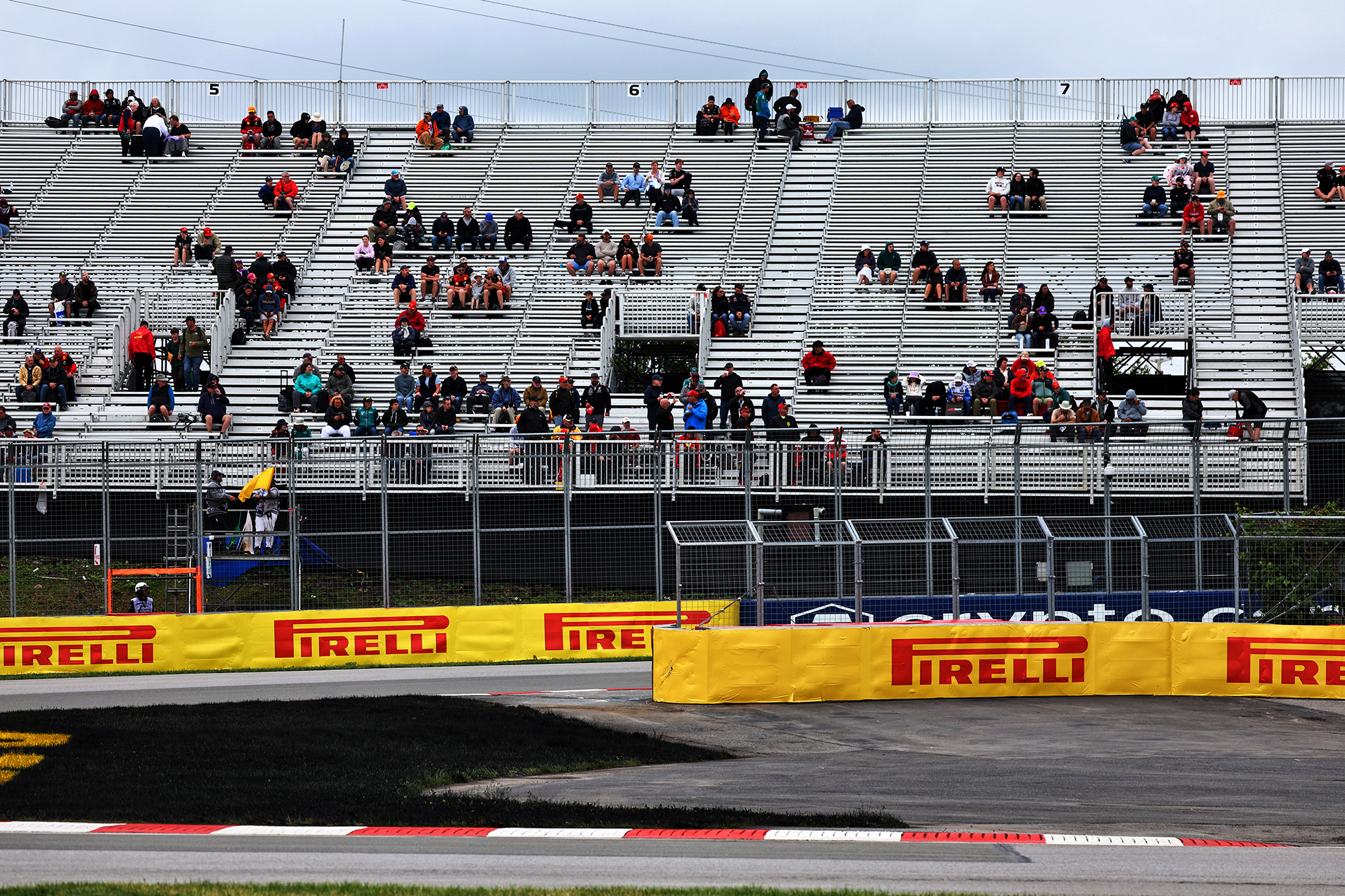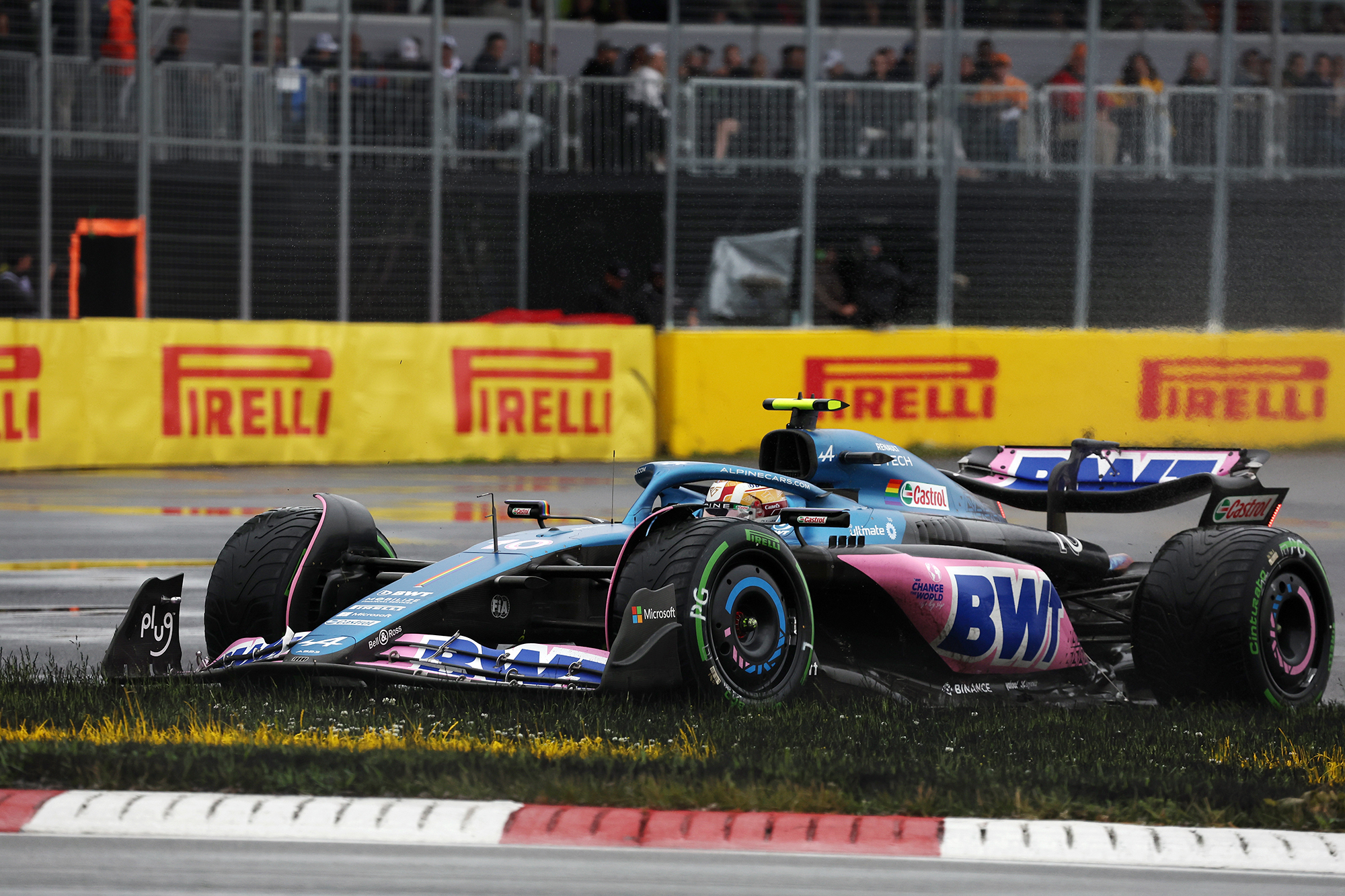Up Next

The FIA has shortened the barrier in the run-off area between Turns 1 and 2 ahead of today’s Canadian Grand Prix in response to feedback from Formula 1 drivers.
This followed changes made to realign and extend the barrier ahead of the weekend in case of a car going off at high speed across the runoff and collecting a car that was exiting Turn 2.

However, objections were raised in Friday’s drivers’ briefing and although no change was made on Saturday, the barrier has been shortened by four metres overnight.
However, this does not mean it has returned to the pre-2023 configuration, although what it does achieve is allowing drivers to rejoin in a more safe manner.
The FIA has confirmed that the initial change “was done to avoid the possibility of a car going off at T1 and coming across the exiting of T2 at speed and potentially t-boning another car”.
It also confirmed that this modification has been made as a temporary measure for the race and that it will “refine” this solution going forward.
The event notes for the weekend have been revised to say drivers now need to rejoin the track through the gap between the shortened barrier and the grass. There had previously been no specific instruction, leading to drivers making awkward turns and going across the grass to rejoin mid-corner.

GPDA director George Russell criticised the change after qualifying and was unhappy drivers had not been consulted.
“We all spoke about that last night [Friday],” said Russell on Saturday.
“We probably should have been consulted about the views on that before decision were made and we all agreed that it’s suboptimal”.
AlphaTauri driver Yuki Tsunoda described the change as “so dangerous”, while team-mate Nyck de Vries claimed it was unnecessary.
He referred to the problem it caused as he had an off in Q1 that forced him to rejoin the circuit around the barrier at a 90-degree angle.
“I think all drivers were aligned that we feel that it was an unnecessary change,” said De Vries.
“Lewis [Hamilton] pointed out he’s been here for 17 years and it’s always been like that, and this has definitely not improved the safety.

“I went wide and had to come back and I basically rejoined the track with a 90-degree angle. And it’s actually difficult to make the corner to the right.”
Alpine driver Esteban Ocon accepted the reasoning for the original change given the risk of a car suffering a brake failure potentially t-boning a car on track.
He suggested on Saturday changes might need to be made for next year given the safety risk.
“I understand a little bit the safety issue behind it,” said Ocon of the initial change.

“If you lose the brakes you can t-bone another car in front so that’s one way to see it. But at the moment it makes it difficult to rejoin to the other side of the track because it’s very narrow angle.
“Things to review for next year but we and the FIA are aware of the compromise.”




